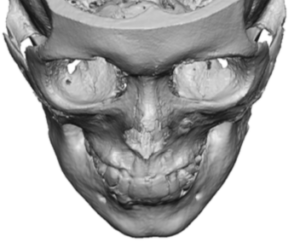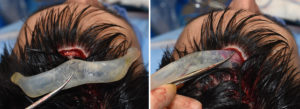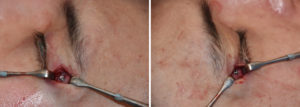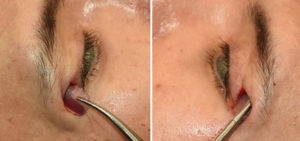Background: The brow bone represents a relatively small amount of the total forehead surface area. But its contribution to the appearance of the upper third of the face exceeds its percent of surface area coverage. It provides some gender specificity as well as contributes to the appearance of the eyes. While some women and almost all transgender male to female patients may want the brow bones reduced, men with little prominence want them augmented.
There really is only one good way to perform brow bone augmentation…and that is through the use of a custom designed brow bone implant. Besides having complete preoperative control of its shape and dimensions, it can also be placed through the small discrete incisions. The use of bone cements for brow bone augmentation is really an outdated technique due o lack of precise control of its shape, inability to ever get it low enough on the brow bone and along the lateral orbital rim and the need for much larger scalp incisions to place it. Short of already having a wide open coronal scalp incision and exposure to the lower forehead for other reasons I can not think of any aesthetic benefit for the use of bone cements as an onlay in this forehead area.
Designing a brow bone implant must first lay out its footprint (outline) before creating its dimensions. The implant footprint considers how low on or over the supraorbital rim it needs to be, how far down along the lateral orbital rim it should extend and at what level the brow bone break should occur. Dimensional considerations include the amount of forward projection at three specific points, glabella, mid-pupil and brow-lateral orbital rim transition area. Lastly, in profile, the shape of the projection needs to be determined.








Case Highlights:
1) Augmentation of the flat brow bones in a male is best done with a custom brow bone implant.
2) The design of a custom brow bone implant must consider its complex topography and not just th amount of horizontal projection desired.
3) Placement of custom brow bone implant that has lateral orbital extensions needs small lateral eyelid incision for proper placement and fixation.
Dr. Barry Eppley
Indianapolis, Indiana




